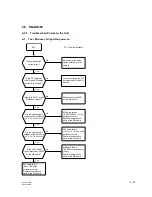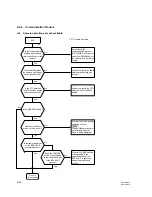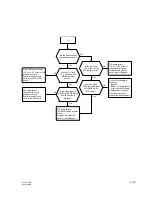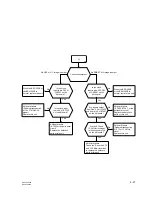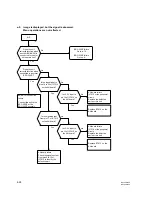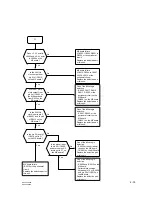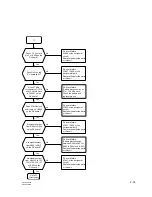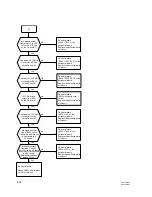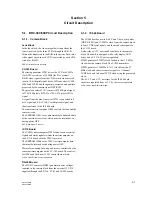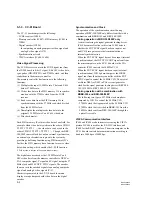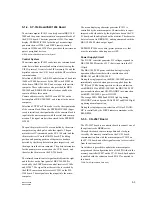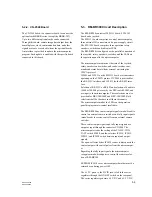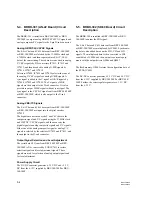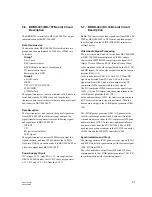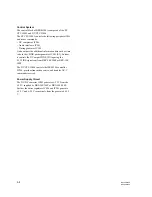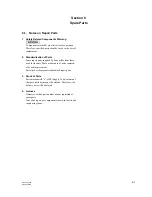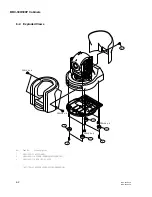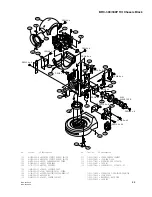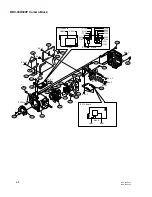
5-1
BRC-300/300P
BRU-300/300P
Section 5
Circuit Description
5-1. BRC-300/300P Circuit Description
5-1-1. Camera Block
Lens Block
In the lens block, the video image that is input from the
lens is received by the three CCDs through the R/G/B
filters after dispersion to the RGB in the prism. Each color
video signal stored in each CCD is extracted by each CDS
circuit for R/G/B.
CDS: Correlated Double Sampling
VC-343 Board
The timing generator IC503 drives the CCD at 66 MHz
(for NTSC system) or at 54 MHz (for PAL system).
R/G/B video signals from the CDS circuits are converted
to each 14-bit digital signal by the A/D converters IC504,
IC505 and IC506, and then gamma-corrected and aperture
processed by the camera signal DSP IC602.
The pixel converter IC701 converts 1070000-pixel signal
to 720
x
480 pixels (NTSC) or 720
x
576 pixels (PAL)
signal.
A signal from the pixel converter IC701 is converted to 8-
bit Y signal and 8-bit C (Cb/Cr multiplexed) signal, and
then transferred to the IF-944 board.
The camera microcomputer IC902 controls the lens and the
camera circuit.
The EEPROM IC901 saves adjustment data and mode data
of the camera drive system, which must be retained even
during power OFF.
DSP: Digital Signal Processor
IF-110 Board
The VISCA microcomputer IC403 sends/receives control
signals and status signals to/from the microcomputer on
the SY-314 board with the VISCA protocol.
The EEPROM IC404 saves VISCA microcomputer data
that must be retained even during power OFF.
Motors for zooming, focusing and iris are controlled by the
camera microcomputer on the VC-343 board. The control-
ler IC304 and the driver IC303 control these motors.
VISCA: Video System Control Architecture
DD-208 Board
The DC-DC converter DD001 generates power voltages
required in the camera block from the external 12 V DC
supplied through the SY-314, CC-91 and IF-944 boards.
5-1-2. IF-944 Board
The IF-944 board converts 8-bit Y and C data, sync pulses
(HD/VD/FLD) and 13.5 MHz clock from the camera block
to four LVDS serial signals, and then sends the signals to
the CC-91 board.
It also relays
+
12 V power and serial data to the camera
block. The board is equipped with a tally display LED
driver and
+
3.3 V/
+
5 V series regulators.
IC2003 generates 27 MHz clock locked to the 13.5 MHz
clock from the camera block. The LVDS transmitter
IC2002 generates 189 MHz (27
x
7) clock from the 27
MHz clock, and converts camera signals to 3-channel
LVDS data and 1-channel LVDS clock using the generated
clock.
The
+
3.3 V and
+
5 V necessary for the IF-944 board
circuit are regulated from
+
12 V by the series regulators.
LVDS: Low Voltage Differential Signal

